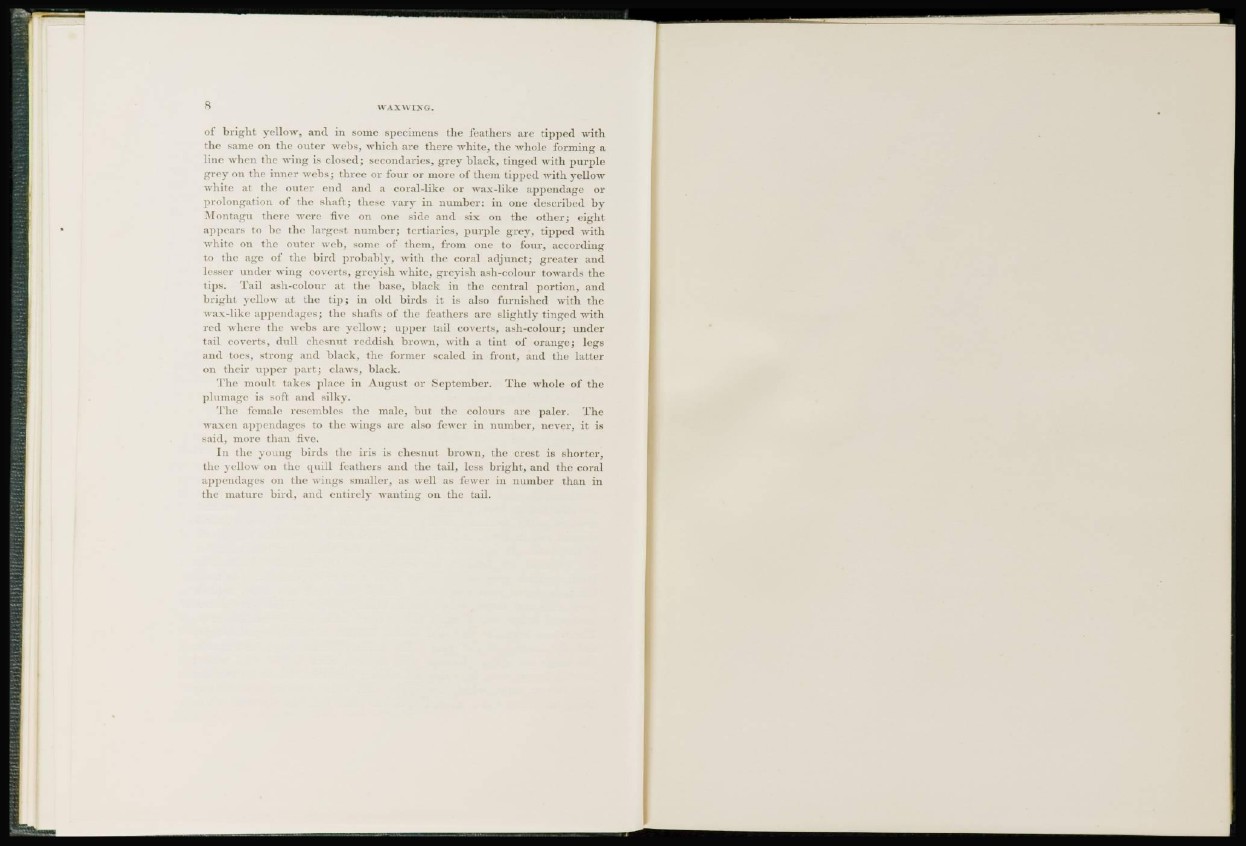
of brighl yellow, and in some specimens the leathers are tipped with
the same on the outer webs, which are there white, the whole forming a
line when the wing is closed; secondaries, grey black, tinged with purple
grey on the inner webs; three or four or more of them tipped with yellow
white at the outer end and a coral-like or wax-like appendage or
prolongation of the shaft; these vary in number: in one described by
Montagu there were five on one side and six on the other; eight
appears to be the largest number; tertiarics, purple grey, tipped with
white on the outer web, some of them, from one to four, according
to the age of the bird probably, with the coral adjunct; greater and
lesser under wing coverts, greyish white, greyish ash-colour towards the
lips. Tail ash-colour at the base, black in the central portion, and
brighl yellow at the tip; in old birds it is also furnished with the
wax-like appendages; the shafts of the leathers are slightly tinged with
red where the webs arc yellow; upper tail coverts, ash-colour; under
tail coverts, dull chesnut reddish brown, with a tint of orange; legs
and t o e s , strong and black, the former scaled in front, and the latter
on their upper part; flaws, black.
The moult takes place in August or September. The whole of the
plumage is soft and silky.
The female resembles the male, but the colours are paler. The
Maxen appendages to the wings are also fewer in number, never, it is
said, more than five.
In the young birds the iris is chesnut brown, the crest is shorter,
the yellow on the quill leathers and the tail, less bright, and the cor.al
appendages on the wings smaller, as well as fewer in number than in
the mature bird, and entirely wanting on the tail.